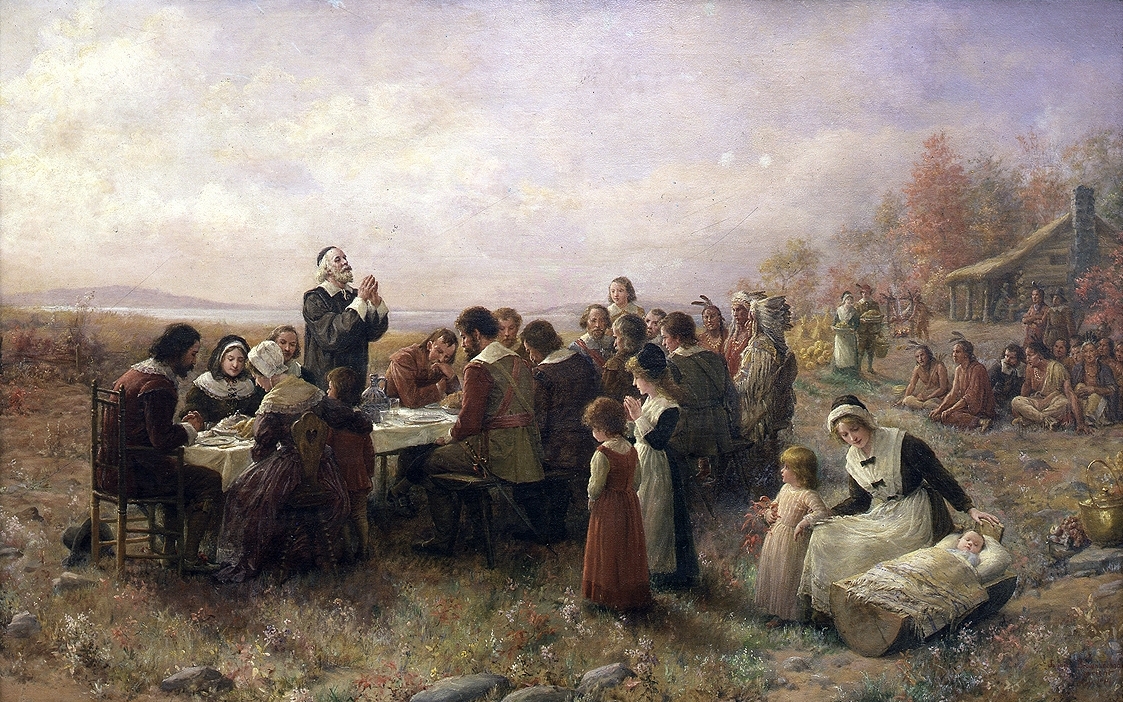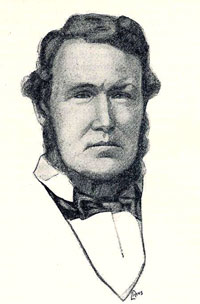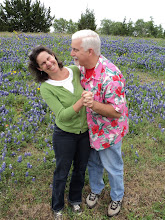—M. F. K. Fisher
The day after Thanksgiving, when we’re all still riding that tryptophan high, seems like an appropriate time to resume our occasional series of posts on our most memorable meals.
Thanksgiving has always been my favorite holiday, in part because it’s all about the eating with none of the anxiety that gift-giving can inspire. And I love all that traditional Thanksgiving food: the turkey, dressing, cranberry sauce, mashed potatoes, sweet potatoes, biscuits, pumpkin pie....
This year, however, Heather announced that we would be forgoing the traditional turkey in favor of one of Madroño’s many wild hogs roasted in a pit—though after that announcement occasioned howls of outrage from daughter Lizzie, Heather crumbled and bought a turkey after all, just for the sake of peace in the family.
Whatever. Thanksgiving is at least as much about the side dishes (dressing, potatoes, biscuits, vegetables) and desserts (pies—oh, my Lord, the pies!) as it is about the turkey. Rest assured that no one in our house went hungry yesterday—that’s an artist’s rendering of us in the picture above, by the way—though I confess that I’m glad to have the turkey, to indulge my annual quest for the Platonic ideal of the turkey sandwich. (We did bury half a pig in coals on Thanksgiving afternoon, however, and dug it up at 10 o’clock last night; looks like we’ll be snacking on turkey and pig sandwiches for a while.)
Even more than it is about the food, though (and you’ll just have to trust me on this), Thanksgiving is actually about the fellowship. It seems to be the one major national holiday when there’s no anxiety about gift-giving, piety, or political correctness to distract or annoy us. We come together around the table with family and friends, and sometimes even with strangers, and we share food and drink and maybe a little football talk, and then we stagger off to the floor or sofa or even bed to lie down and groan for a while, and then we get up and try to sneak back in for maybe just one more little piece of pie.... Okay, okay, maybe it really is all about the food.
But on Thanksgiving that food takes on a deeper symbolic value than it does for most of the rest of the year; on Thanksgiving that quotation above from Mary Frances Kennedy Fisher is truer than ever. On Thanksgiving the acts of preparing, serving, and eating become consciously sacramental; the cook(s) giving, the guest(s) receiving, in a spirit of gratitude that can, sadly, be all too rare at other times of the year, when the exigencies of jobs, schoolwork, the finals of Dancing with the Stars, and other responsibilities make the preparation and consumption of food little more than an afterthought. (TV Dinners, anyone?)
Indeed, the thoughtful and conscious preparation and consumption of food was one of the prime inspirations for what we hope to accomplish at Madroño Ranch: gathering bright, creative people together around the table for nourishment both physical and intellectual. You could almost say that we hope to make every meal at Madroño a sort of Thanksgiving dinner, except that some of us would quickly weigh 300 pounds.
But you’re wondering when I’m finally going to get to that memorable meal, aren’t you? Okay, here it comes. It was a Thanksgiving during college. As I wrote in a previous post, I grew up in the San Francisco Bay Area but went to college in western Massachusetts. In those days, largely for financial reasons, I made the long flight to and from home only for Christmas break (which usually meant spending endless hours in Chicago’s O’Hare Airport as winter snows played havoc with flight schedules) and summer vacation.
One of my college classmates was a “townie”; his family lived and worked on a farm several miles from campus, and he invited several of us who weren’t going home for the holiday to Thanksgiving dinner with them.
Honestly, after thirty-two years, I don’t actually remember what we ate that night. It was sturdy, simple farmhouse fare, and I’m pretty sure it included all the usual suspects: turkey, dressing, cranberry sauce, and mashed potatoes, and probably yams, and peas with pearl onions, and no doubt there was pie—pumpkin and perhaps several others—for dessert. I don’t even remember how many of us gathered around that well-laden farmhouse table; I think there must have been about a dozen, what with the family and us temporary orphans.
But I do remember the feeling of being thought of, and taken care of. The warmth of knowing that, while I might be thousands of miles from home, I was still welcome at someone’s table. Every Thanksgiving dinner, when people gather with loved ones, or with strangers, to enjoy the abundance of nature transmogrified by the loving care of heat and spice and assembly, is a homecoming in miniature. At that farmhouse in Williamstown I was, if only temporarily, a part of a family again.
I hope I had the good grace to send a thank-you note to my friend’s mother, but I was a callow and self-centered college student, and I suspect I didn’t. This belated acknowledgment hardly makes up for my youthful lack of manners, but Mrs. Burdick, if you’re out there, I want you to know that your generosity made an indelible impression on me, even if I didn’t properly acknowledge it at the time. I will never be able to give thanks enough for that wonderful meal, or for your kindness in inviting us to share it.
—Martin
What we’re reading
Heather: J. K. Rowling, Harry Potter and the Deathly Hallows (again!)
Martin: Marissa Guggiana, Primal Cuts: Cooking with America’s Best Butchers







